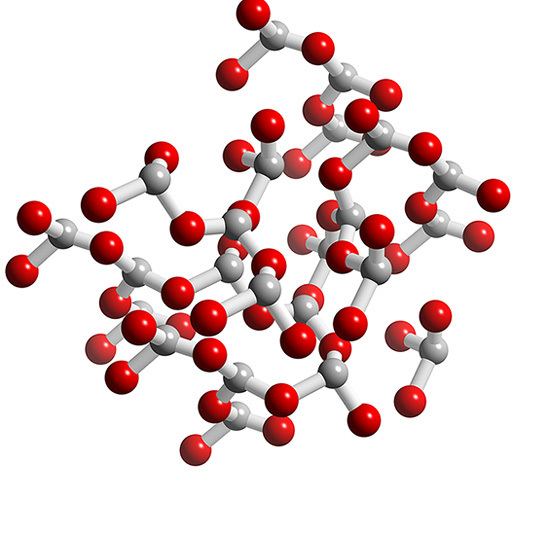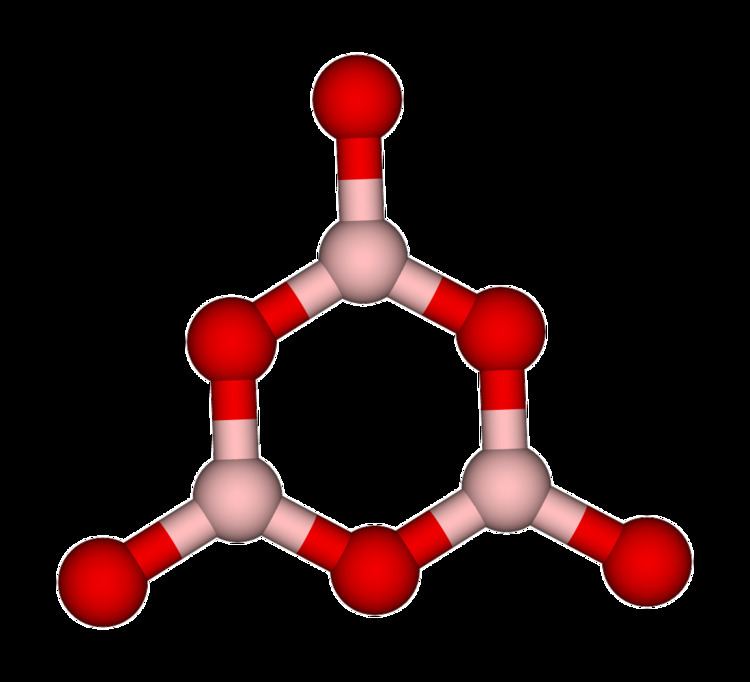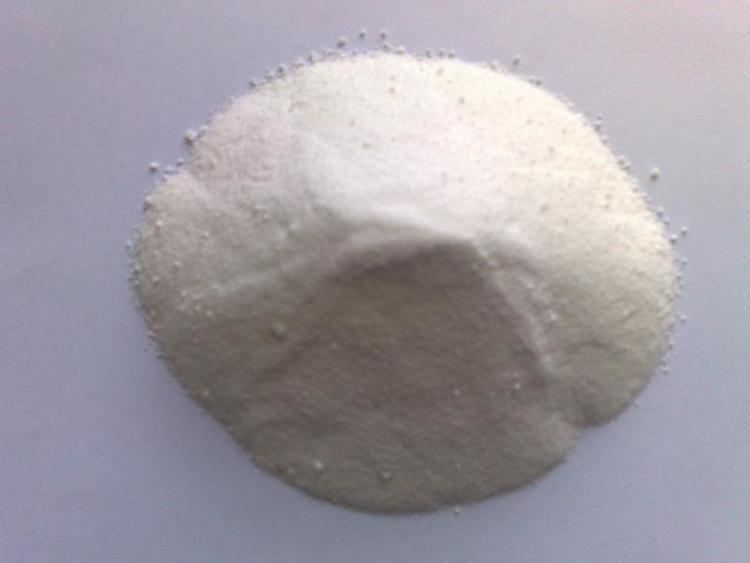Appearance white, glassy solid Molar mass 69.6182 g/mol Density 2.46 g/cm³ | Formula B2O3 Melting point 450 °C Boiling point 1,860 °C | |
 | ||
Thermodynamicdata Phase behavioursolid–liquid–gas | ||
Preparation of metaboric acid pyroboric acid boron trioxide
Boron trioxide (or diboron trioxide) is one of the oxides of boron. It is a white, glassy solid with the formula B2O3. It is almost always found as the vitreous (amorphous) form; however, it can be crystallized after extensive annealing (that is, under prolonged heat).
Contents
- Preparation of metaboric acid pyroboric acid boron trioxide
- Boron trioxide meaning
- Preparation
- Applications
- References

Glassy boron oxide (g-B2O3) is thought to be composed of boroxol rings which are six-membered rings composed of alternating 3-coordinate boron and 2-coordinate oxygen. Because of the difficulty of building disordered models at the correct density with a large number of boroxol rings, this view was initially controversial, but such models have recently been constructed and exhibit properties in excellent agreement with experiment. It is now recognized, from experimental and theoretical studies, that the fraction of boron atoms belonging to boroxol rings in glassy B2O3 is somewhere between 0.73 and 0.83, with 0.75 ( 3⁄4) corresponding to a 1:1 ratio between ring and non-ring units.

The crystalline form (α-B2O3) (see structure in the infobox) is exclusively composed of BO3 triangles. This trigonal, quartz-like network undergoes a coesite-like transformation to monoclinic β-B2O3 at several gigapascals (9.5 GPa).

Boron trioxide meaning
Preparation

Boron trioxide is produced by treating borax with sulfuric acid in a fusion furnace. At temperatures above 750 °C, the molten boron oxide layer separates out from sodium sulfate. It is then decanted, cooled and obtained in 96–97% purity.
Another method is heating boric acid above ~300 °C. Boric acid will initially decompose into water steam and metaboric acid (HBO2) at around 170 °C, and further heating above 300 °C will produce more steam and boron trioxide. The reactions are:
H3BO3 → HBO2 + H2O2 HBO2 → B2O3 + H2OBoric acid goes to anhydrous microcrystalline B2O3 in a heated fluidized bed. Carefully controlled heating rate avoids gumming as water evolves. Molten boron oxide attacks silicates. Internally graphitized tubes via acetylene thermal decomposition are passivated.
Crystallization of molten α-B2O3 at ambient pressure is strongly kinetically disfavored (compare liquid and crystal densities). Threshold conditions for crystallization of the amorphous solid are 10 kbar and ~200 °C. Its proposed crystal structure in enantiomorphic space groups P31(#144); P32(#145) (e.g., γ-glycine) has been revised to enantiomorphic space groups P3121(#152); P3221(#154)(e.g., α-quartz).
Boron oxide will also form when diborane (B2H6) reacts with oxygen in the air or trace amounts of moisture:
2B2H6(g) + 3O2(g) → 2B2O3(s) + 6H2(g)B2H6(g) + 3H2O(g) → B2O3(s) + 6H2(g)